Last-Minute NYC Holiday Gift Guide 🎁
We’ve created a holiday gift guide with presents for the intrepid New Yorker that should arrive just in time—


Lower Manhattan is amidst of a flurry of condo conversions within historic, landmark buildings, opening doors to buildings that have either been closed off for years or inaccessible behind a veil of commercial and industrial uses. Building like Art Deco beauty 70 Pine, One Wall Street, and the Gothic Woolworth Building, are among these, as is One Hundred Barclay, originally the headquarters for New York Telephone Company.
Built in 1927 by architect Ralph Walker, the New York Telephone Building is considered to be the world’s first Art Deco skyscraper. Its “wedding cake” shape, influenced by setbacks required in the first New York City zoning code in 1916, inspired numerous artists, including Modernist John Marin who rendered the building multiple times with a Cubist treatment.
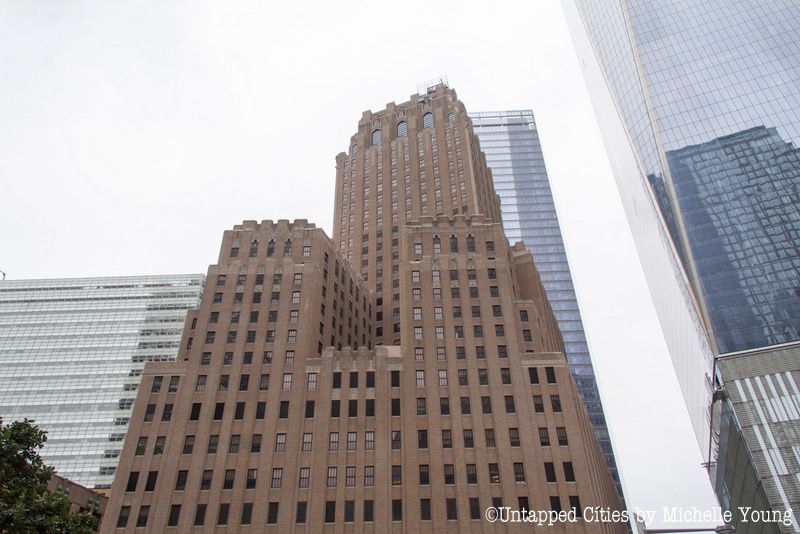
In addition to its revered place in the Modern art movement, the New York Telephone Building was one of those buildings that New Yorkers only got to peek in when lucky – most of the time, its stunning Art Deco lobby was off limits, or at the very least, one you would only dare to step in briefly because of heavy security.
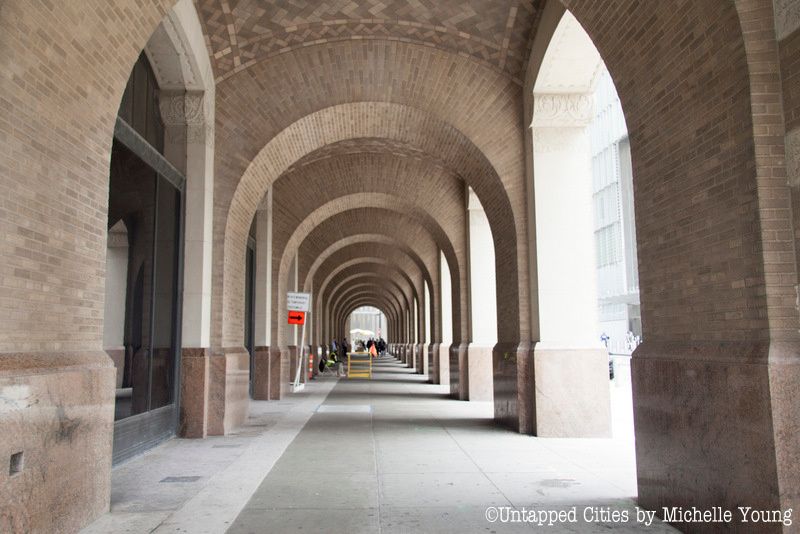
That all changed with the launch of One Hundred Barclay, a condo conversion of the New York Telephone Building by Magnum Real Estate Group and CIM Group. Although part of the lobby is still operated by Verizon, half of the lobby is now part of the condo – and both sides were restored to their original glory. The curved, vaulted ceiling contains painted mural panels that show the evolution of communication, placing the New York Telephone Company within this overarching narrative.

According to the historic designation report from the Landmarks Preservation Commission, “The iconographic program of the lobby clearly symbolizes the triumph of modern communication. The use of grapes and grapevines in the ornament throughout the lobby can be seen as a representation of communication. In addition, an occasional bell, the company symbol, is found in these surfaces.” Today, the condo portion of the original lobby is used as an event space for the condo residents. Both this area and the main entrance lobby, with a cozy living room feel, are designed by Jeffrey Beers International.
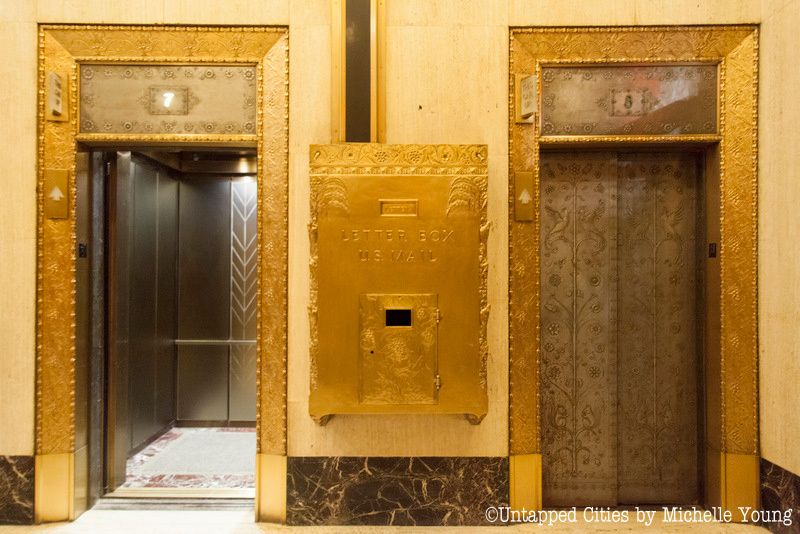

Walker conceived of the whole building as a machine , and believed the Modern architects needed to incorporate new technologies to make their work representative of the era. He applied this concept even to the materials. As the designation report describes, “Stone was used as a veneer on wall surfaces so that pieces could be cut by machine, rather than by hand. The fluted marble pilasters were machine-cut, as well, and the plaster friezes, bronze grilles, and other bronze detailing display repetitive ornamental patterns reminiscent of machine processing. The use of these high quality materials created a sense of strength and refinement consistent with the corporate image the company wished to convey.”

The residences occupy the top 22 floors of the building, from the 11th to the 33rd floor. The 18th floor lounge, with its four outdoor corner terraces, also has a media room, wine tasting room with private wine storage, children’s playroom designed with Playgarden, fitness center, spa, and music practice rooms. There’s an 82-foot swimming pool and a children’s pool, too.
 Detail on exterior of building. View of an 18th floor lounge terrace above.
Detail on exterior of building. View of an 18th floor lounge terrace above.
 One of the four 18th floor lounge terraces
One of the four 18th floor lounge terraces
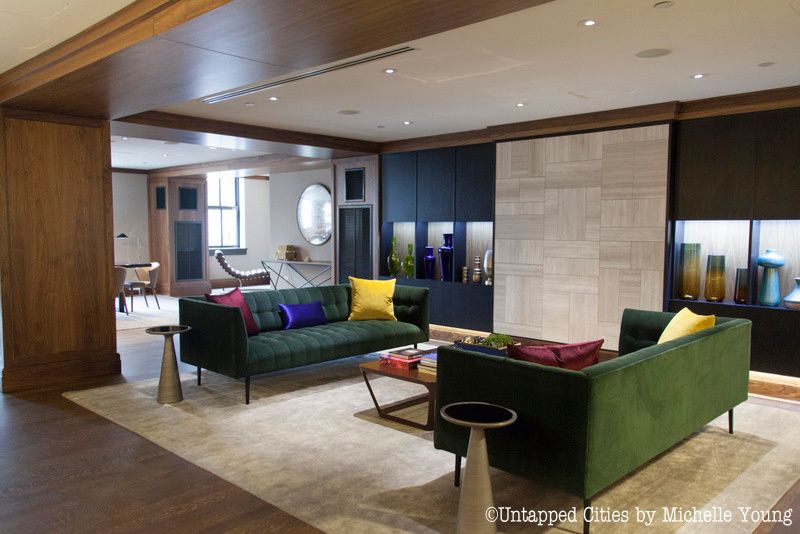
There are 158 residences that range in price from $3.35 to $9.985 million, with views of the Hudson River and lower Manhattan. One of the most striking aspects of the apartments is the silence. The thick masonry facade and masonry-clad steel not only makes these units a respite from the busy streets that surround it, the quality of the original construction has also been credited with the survival of the building during 9/11. Today, the building stands right across the street from One World Trade Center.
Here are some images of the model units:
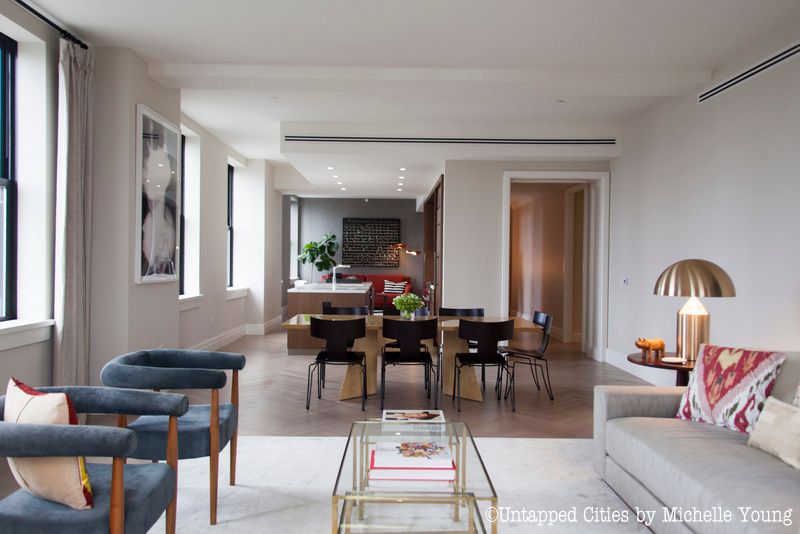
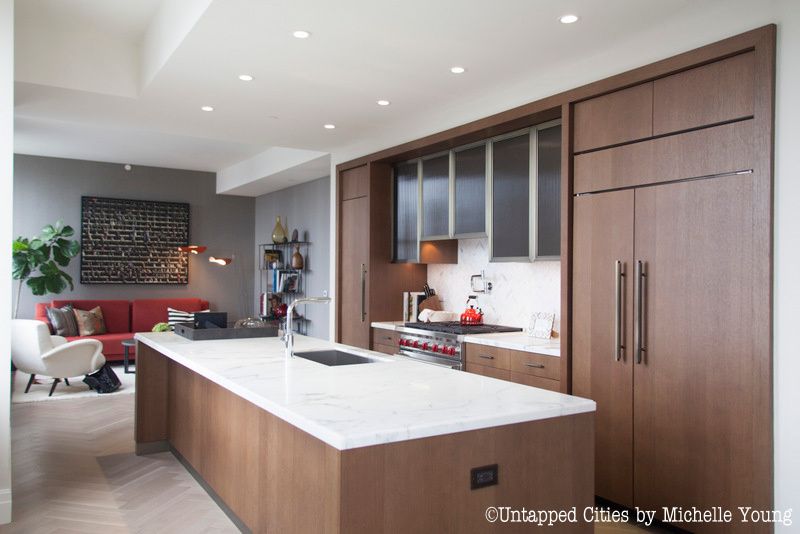

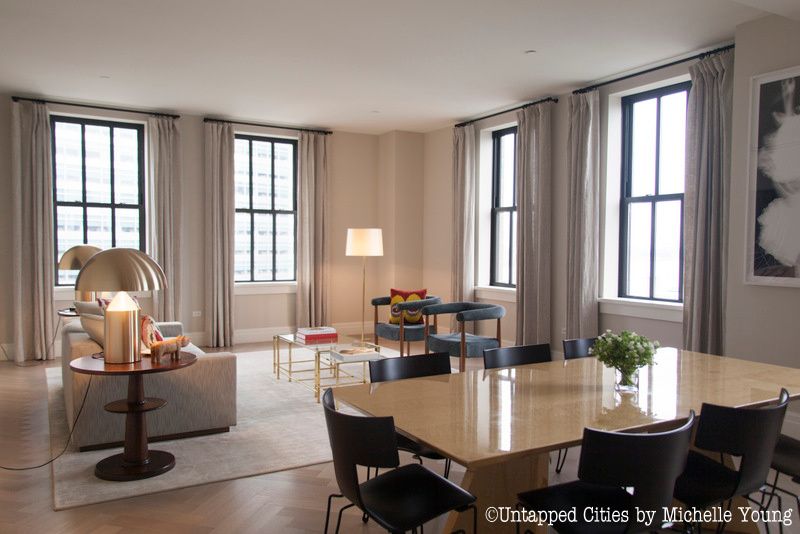


Other highlights of the building, not to miss on a visit at One Hundred Barclay, are the Art Deco elevator banks and a large Art Deco Cutler mailbox in the lobby.
Next, join our upcoming tours of the Art Deco architecture of NYC:
Walking Tour of New York Art Deco Architecture (Part II)
Or join our VIP tour of the Woolworth Building, led by architect Cass Gilbert’s great grand daughter:
Subscribe to our newsletter